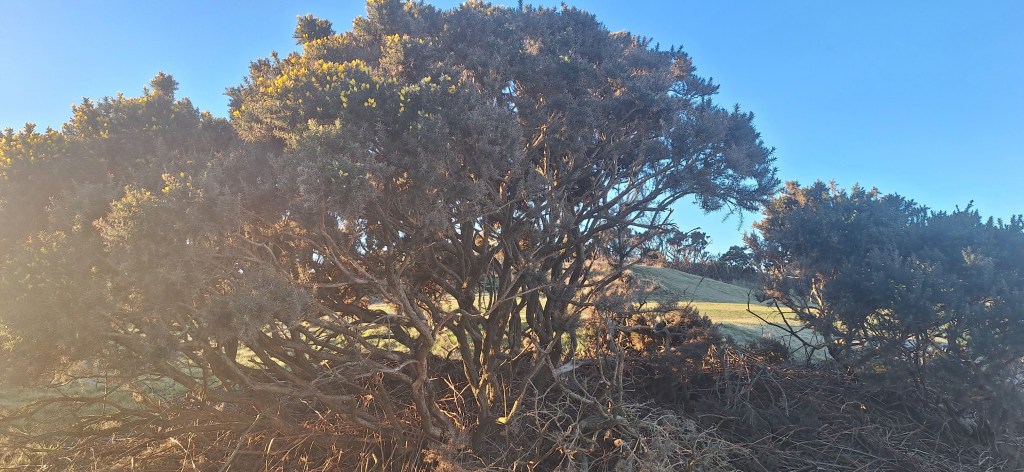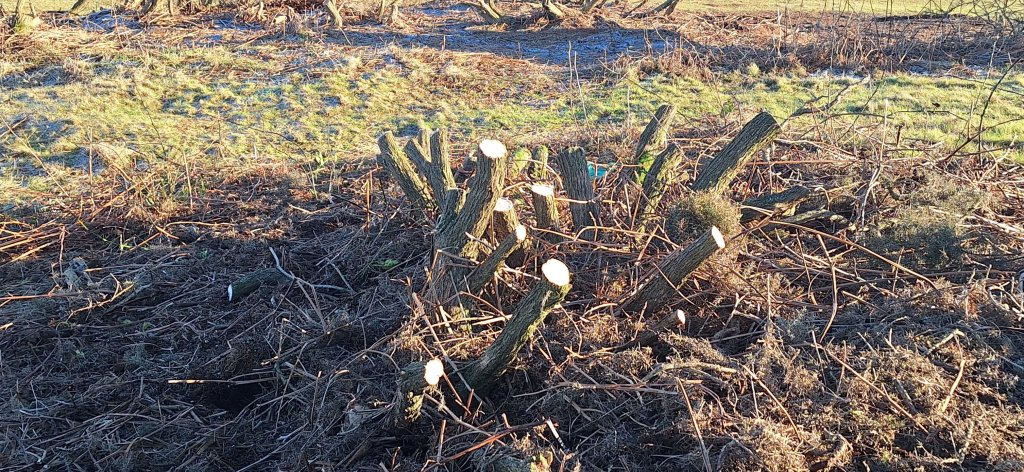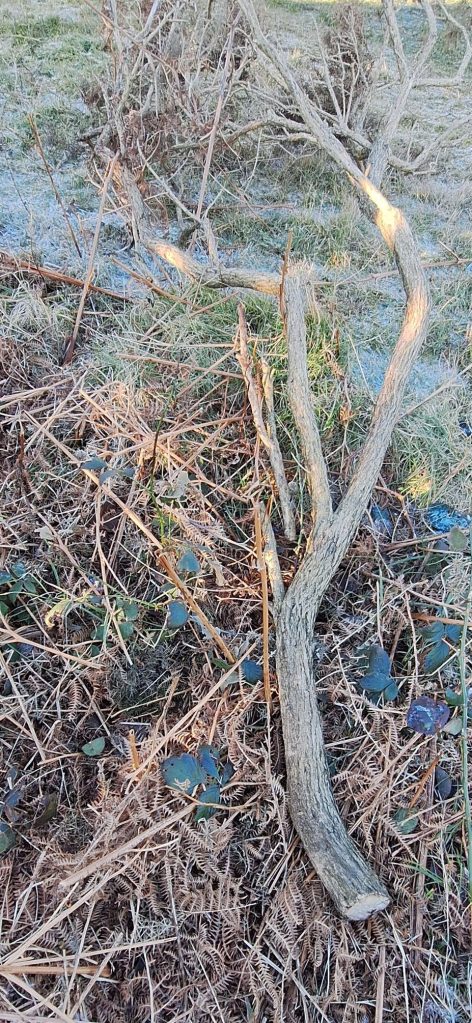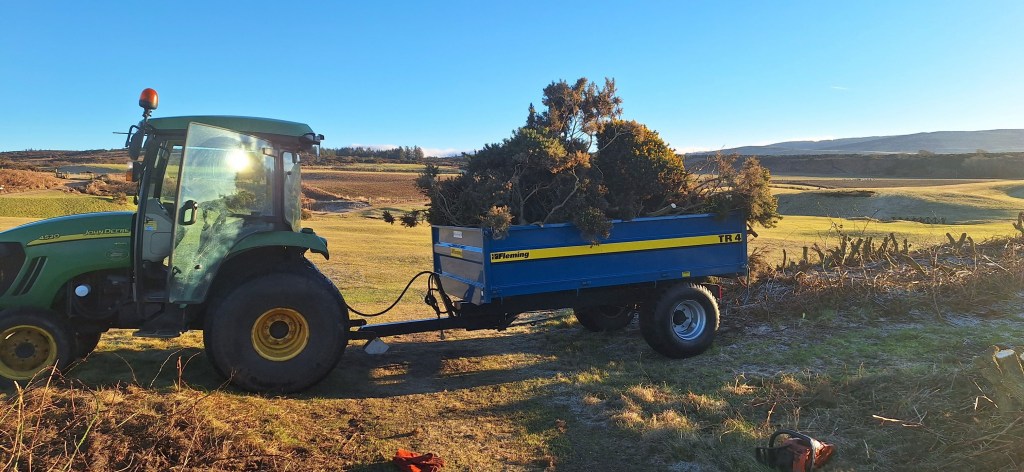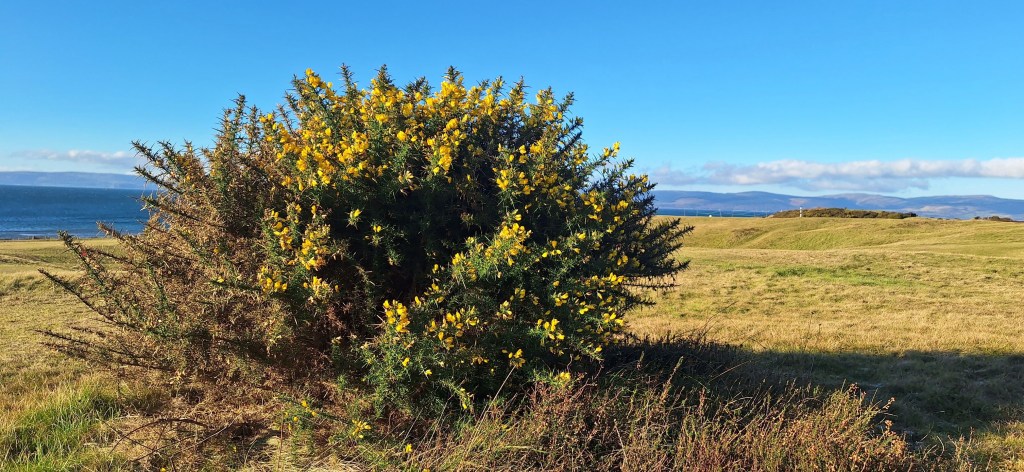Course Update – 4th July 2025
The greens have received a liquid fertiliser spray with added seaweed and iron. This will be applied fortnightly over the Summer to keep nutrient levels up.
The 9th fairway has been vertidrained with 12mm tines prior to an application of wetting agent and liquid fertiliser. Wetting agent helps any rainfall to be pulled down into the profile to keep the grass roots hydrated. After the early drought, parts of the course have suffered so wetting agent will be sprayed to help get moisture levels back up. Many areas are dry and crusty on top and those areas will require additional work.
Part of the 5th fairway has also suffered from the early drought. This area has been raked to open up the surface and rip out all the dead material. The resulting crusty, dead matter is then blown off. This is followed by a final tidy up and boxing off of any remaining bits.
The 11th fairway has been raked and the debris boxed off.
The surrounds and outer surrounds have had a spray application of liquid seaweed and iron. We hope to get round a few areas of the course that have been weakened by the early drought in the coming weeks, when time and gaps in the tee sheet allow.
A wetting agent programme will be implemented on the fairways towards the end of the Summer to allow any rainfall to go down deeper into the profile.
Overseeding of the weaker areas on both fairways and greens will continue over the Summer as we endeavour to improve the sward species on both.
We have spent time this week getting the junior course ready for the wee ones, as this has proved popular during the Summer holidays over the last few years.
The Par 3 tees are being divoted every day to help with recovery. The rest of the tees are being divoted once or twice a week.
Hopefully we will get some nicer and sunnier weather over the Summer, as contrary to popular belief, I do enjoy a bit of sunshine myself – as long as we get a wee bit of rain at times too, ideally at night.
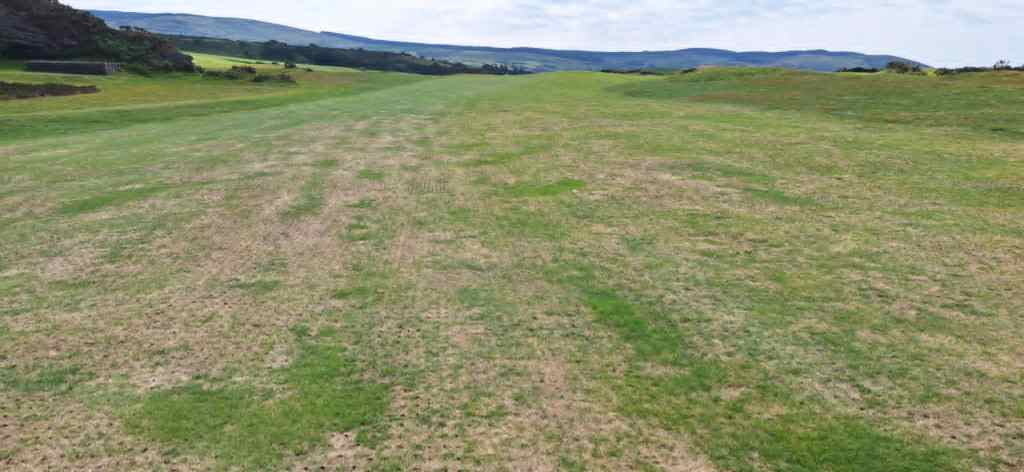
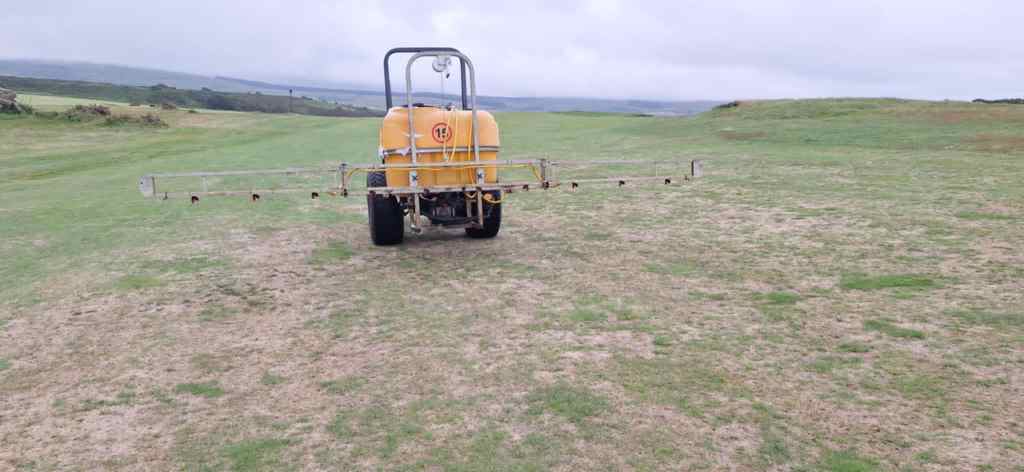
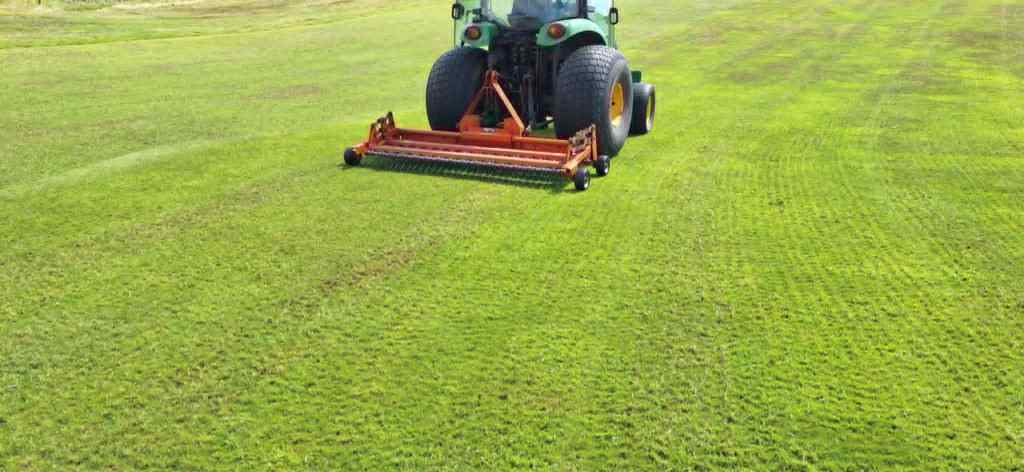
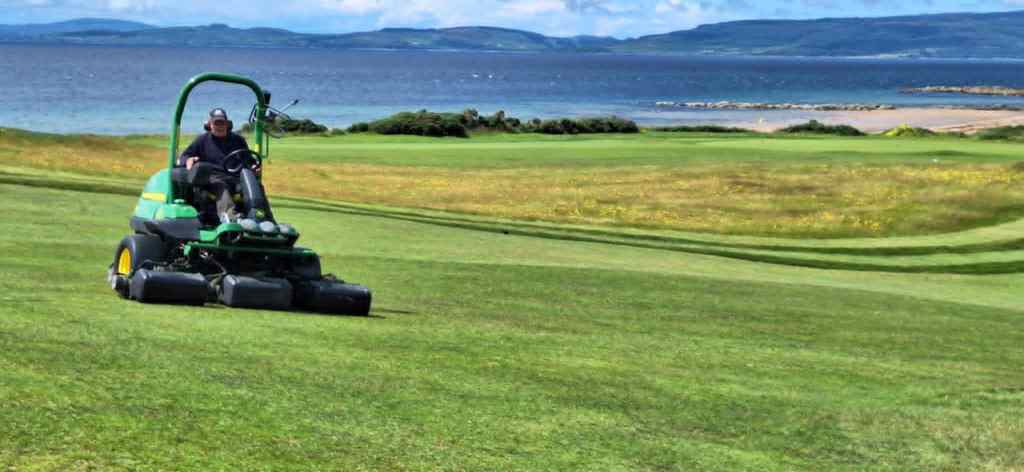

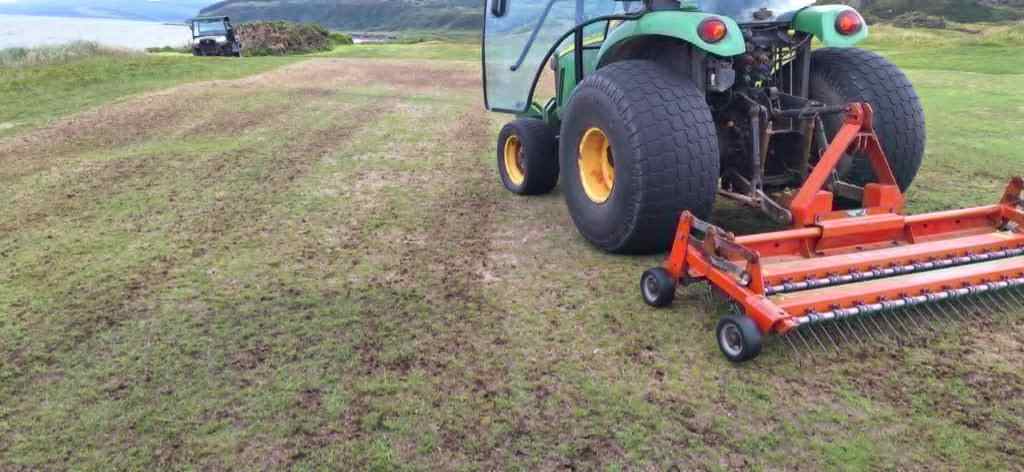
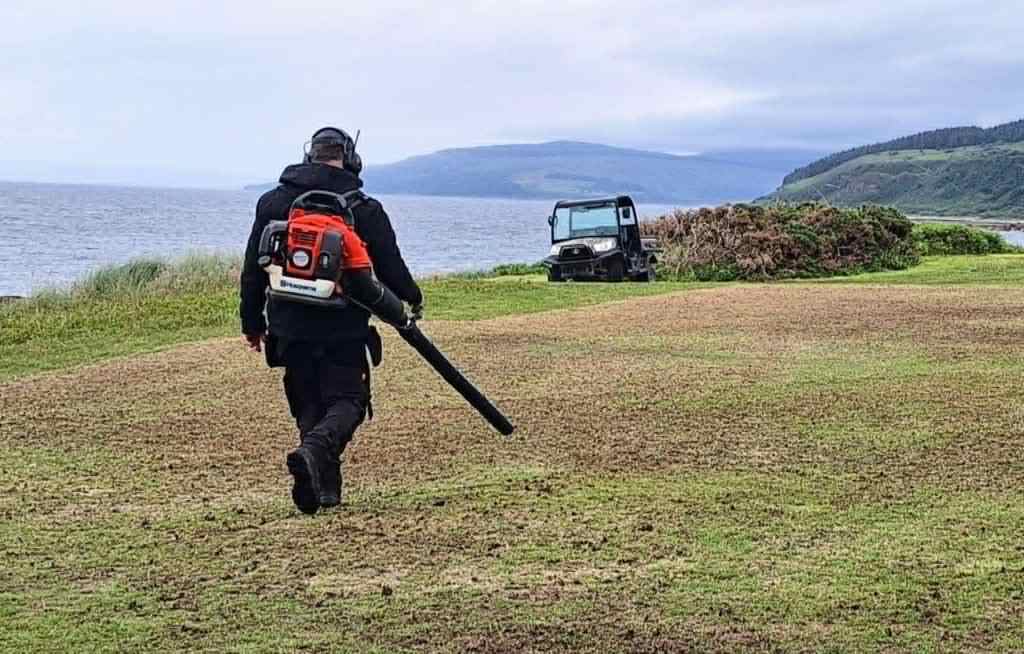
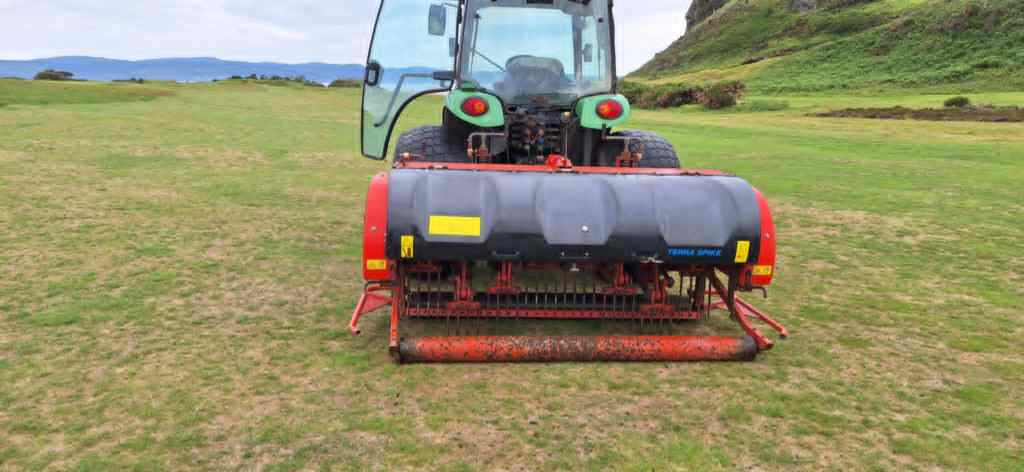
Course Update – 19th June 2025
The club championship has come and gone and despite challenging conditions at times the course was looking good and was presented to a high standard. The greenkeeping team were in early on the Sunday morning, working to get the course ready for the finals. Congratulations to all on the day.
Our focus now is keeping up with cutting. The greens are being cut 5 times a week, and the tees and fairways twice a week. We have also been boxing grass off on selected fairways to keep them a lot tidier and to lift weed seeds.
After the early drought there will be areas of course needing extra work i.e. overseeding, topdressing, irrigation. Some areas may require roping off to help with recovery.
This week the greens and surrounds have been verticut to help refine surfaces.
We are keeping up with divoting of tees and fairways to help keep those areas in good condition. The tees also received a granular fertiliser that required some watering in. The greens were vertidrained with a 10mm tine ahead of the forecast heavy rain to aid penetration.
The greens will be vertidrained monthly over the Summer to allow air and water into the profile.
Looking ahead the 9th fairway will require additional work and treatments as this fairway has suffered a bit in the early drought.
Most fairways have recovered well from the dry Spring, and even with the rainfall we have had in the last few weeks, retain their links playing characteristics of firm running fairways. We are a links course, so if it is lush green fairways you are looking for, we don’t have those at Shiskine, just natural browner firmer links fairways.










Course Update – 30th May 2025
The main focus this last 3 weeks has been trying to keep the greens hydrated during the hot, dry spell. Along with the sprinkler on the greens we were hand watering the very dry areas on certain greens, not easy though with the poor water pressure.
The course has now taken on that traditional links look and is playing hard and fast.
With rain forecasted for the end of last week we took the opportunity to vertidrain the greens with 10mm tines to help the welcome rain penetrate into the rootzone. A granular wetting agent was also applied to the drier, more stressed areas on some greens.
With the arrival of the rain on the Friday night and over the weekend the green perked up again with a hint of green returning to the fairways. Liquid wetting agent was applied to the greens and a liquid feed applied the day after.
The main focus now is preparing the course for the club championship and we will intensify verticutting and cutting of greens in the lead up to this.
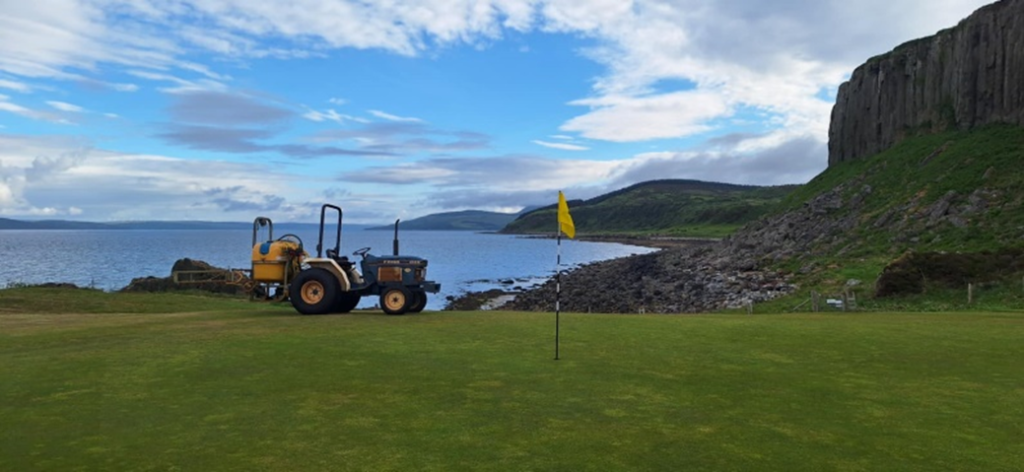
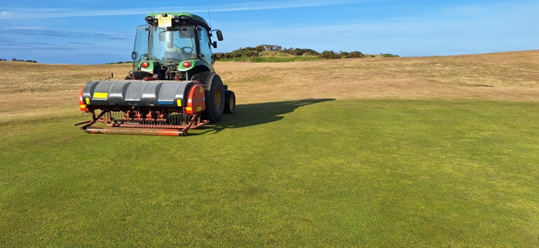

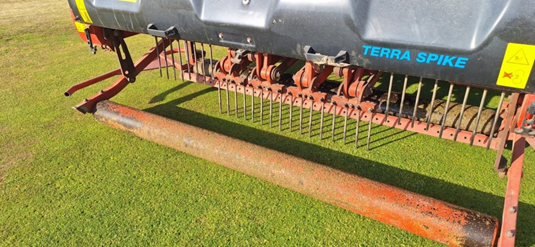
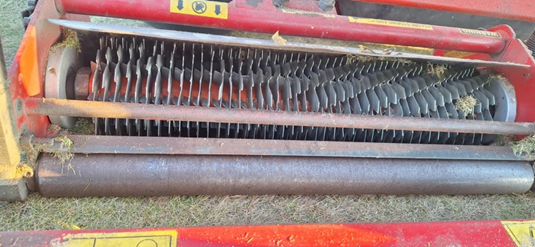

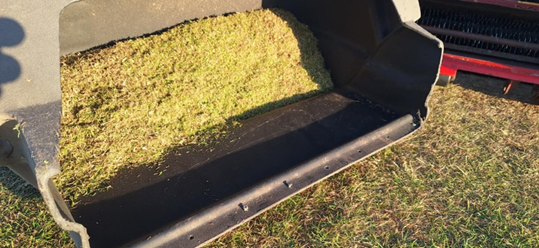

Course Update – 16th May 2025
With the persistent dry conditions over the past three weeks, our primary focus has been on keeping the greens and tees well-hydrated—a challenging task given the limitations of our current irrigation system. This effort has required early mornings and late nights, but I must admit, it’s been rewarding to witness the breathtaking sunrises and sunsets during this period.
Machinery maintenance has also been a key priority, as the dry grass and dust can quickly clog air filters and screens. Ensuring our equipment remains in good working order is critical to maintaining the course.
On a brighter note, our native wildflower areas are now in full bloom. These carefully managed spaces, enhanced by our “cut and collect” method in the autumn, have reduced the density of the grass base, allowing native flowers to thrive.
However, not all news is rosy—our semi-rough mower is currently out of action due to a crack in the pump housing of one of its decks. We are hopeful it will be repaired by next week, but until then, some areas might look a little overgrown.
Lastly, a gentle reminder to all golfers: please help our greens staff by removing broken tees from the tee areas. This small act keeps the course tidy and helps prevent damage to the cutting cylinders. Your cooperation is greatly appreciated!

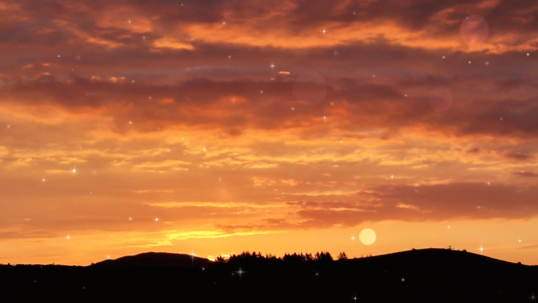
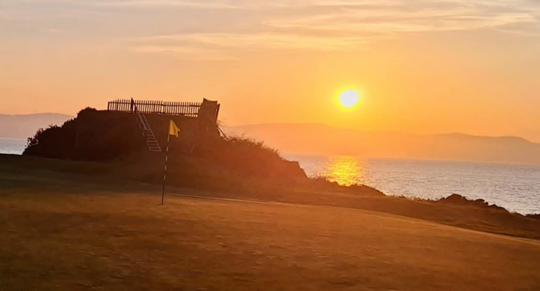
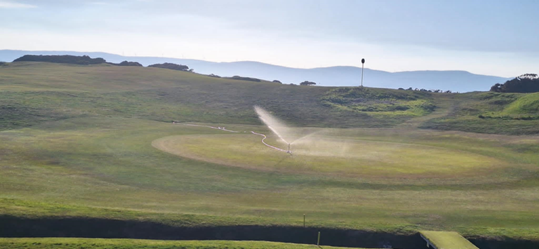
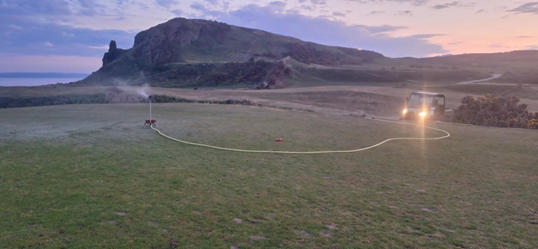

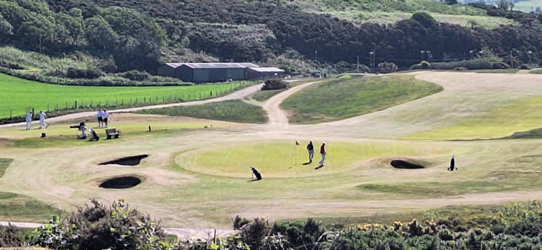

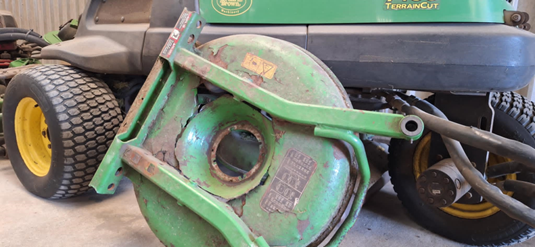

Course Update – 2nd May 2025
This week began on a challenging note due to unfavourable weather conditions affecting our Gents Open. Heavy rain on Saturday followed by additional downpours overnight into Sunday morning led to parts of the course becoming waterlogged. Unfortunately, this prevented us from completing the planned course maintenance ahead of the Open. Nonetheless, we managed to commence the event after a delayed start at 10am. In total, we received 17mm of rainfall, with 7mm falling on Saturday and an unexpected 10mm overnight into Sunday.
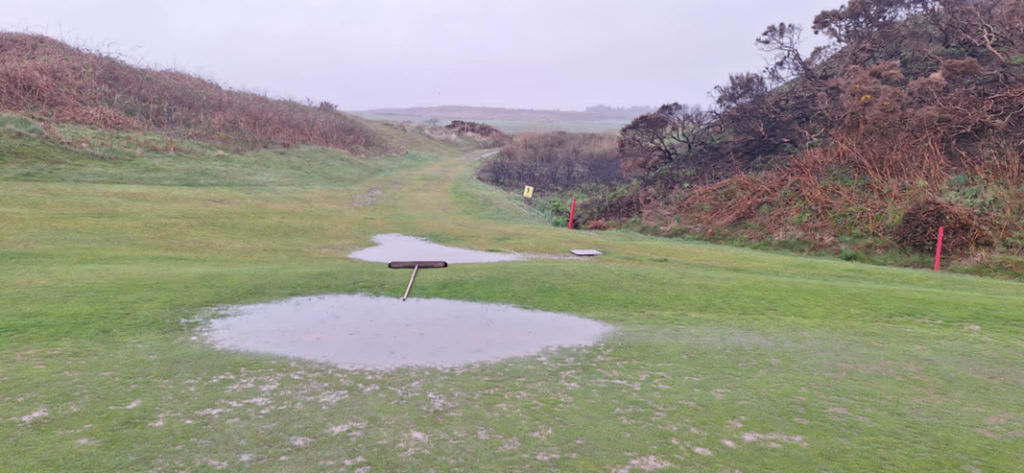
Taking advantage of dry weather on Tuesday, we prepared a significant amount of sand/soil mix for divot repairs. It’s remarkable how quickly this mixture is depleted with daily tee divoting.
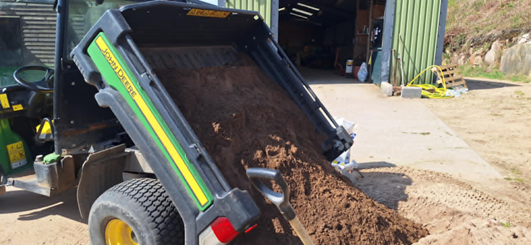
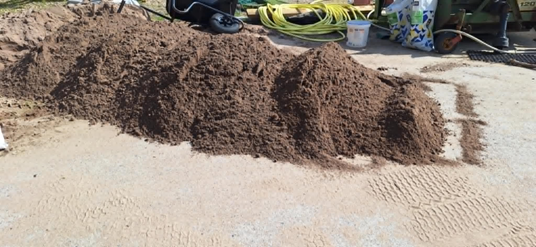
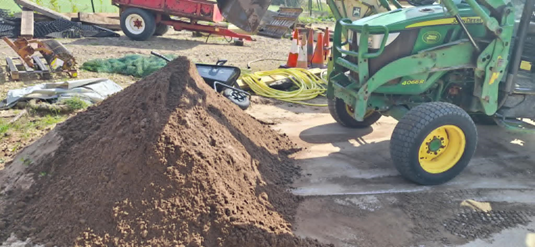
The 3rd green received another round of overseeding and top dressing.
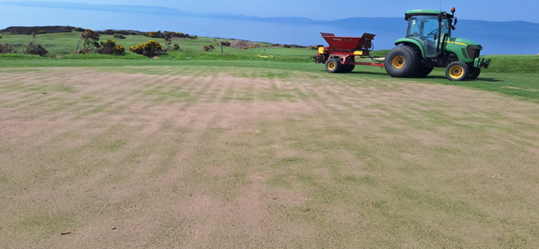
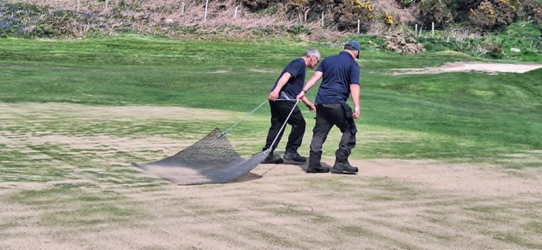
The course is now showing improved definition, thanks to the welcome rise in temperatures. This week, the fairways and semi-rough were cut twice, and the greens were both hand-cut and mowed twice. Additionally, we overseeded the weaker areas on the 5th and 6th greens, and the burn crossing over the 9th was thoroughly tidied up.

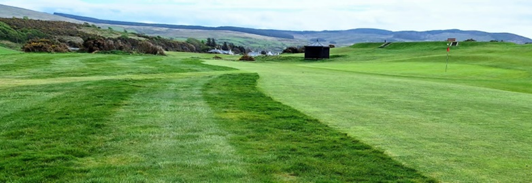
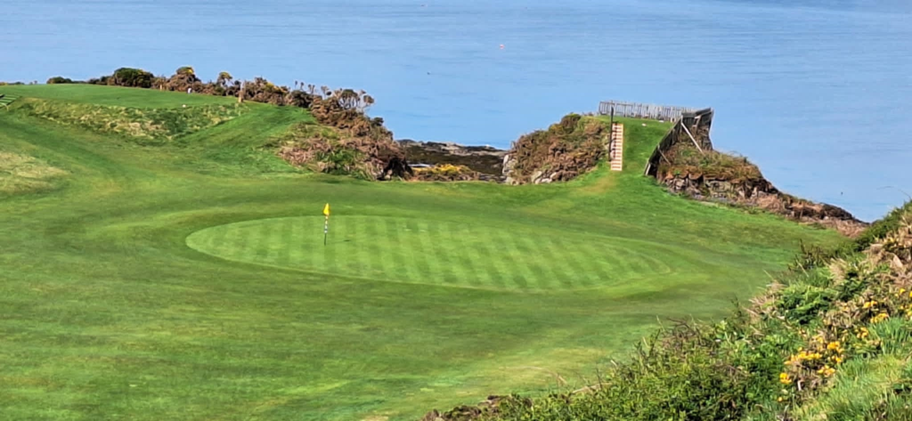
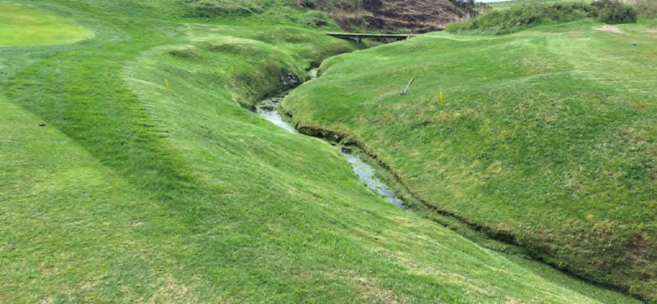
Course Update – 25th April 2025
This week, our primary focus has been preparing the course for our Gents Open on Sunday. The tees and fairways have been attended to three times over this week, ensuring sharp and well-defined contours. The greens have also received three rounds of cutting, including one hand cut for precision.
Despite the persistent chill and biting North East wind, we anticipate warmer weather in the coming week. The steps to the 8th medal tee have been completed, making it ready for use. Additionally, the new handrail along the 4th path has been sanded and painted.
We all hope for a beautiful, calm, and sunny day on Sunday, and I extend my best wishes to all the players competing.
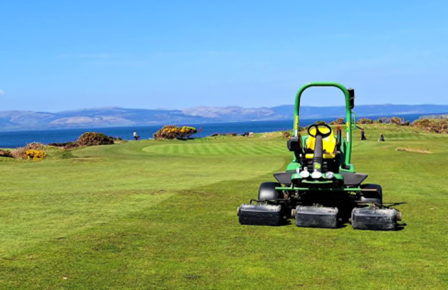
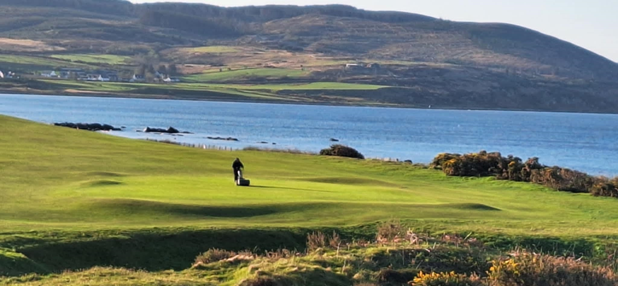

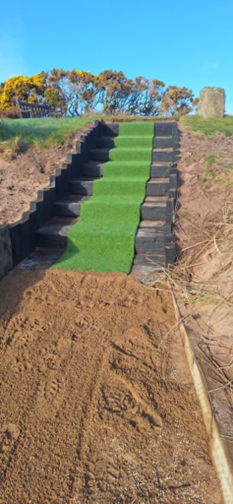
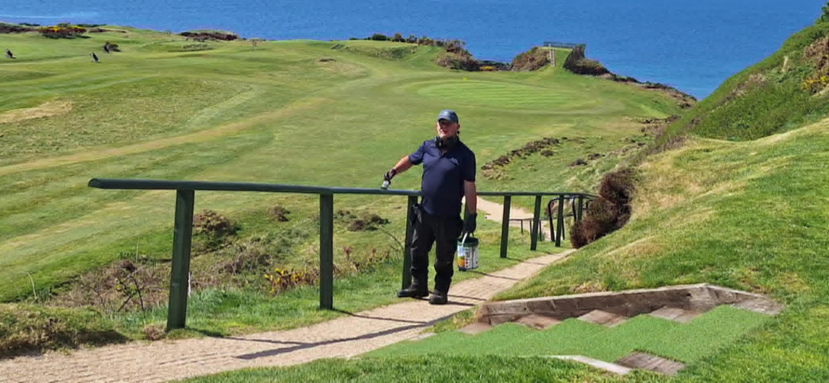
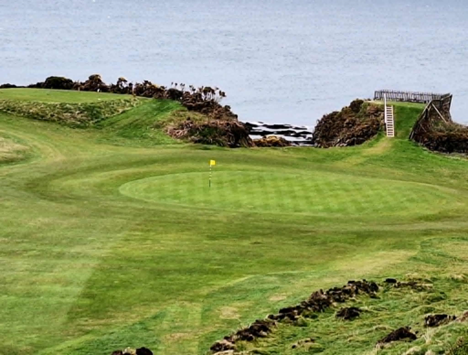
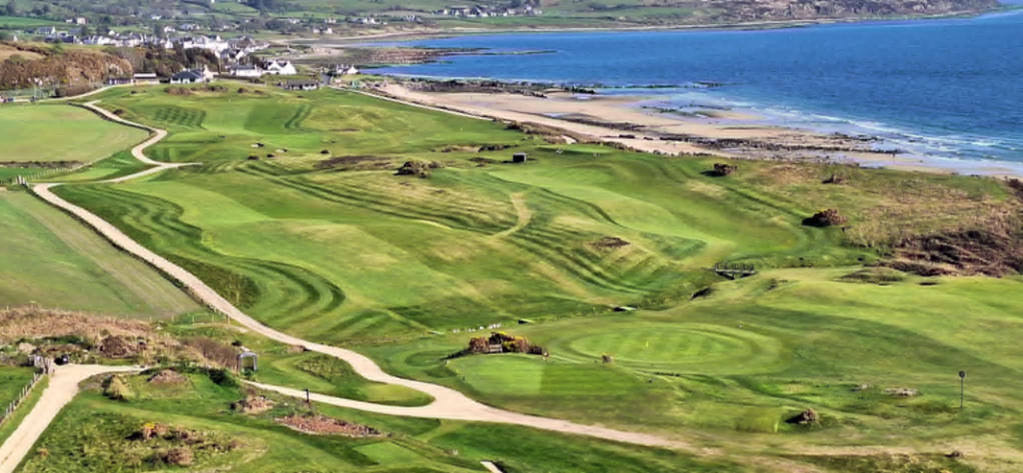
Course Update – 17th April 2025
This week, we welcomed much-needed rainfall, with 15mm accumulating over Wednesday and Thursday. However, the accompanying severe temperature drop of 10 degrees from last week was not as well-received!
The rain has revitalised the course, allowing us to apply a liquid nitrogen feed and a revolution wetting agent on the greens. I have been using this wetting agent for several years now, and it consistently delivers excellent results, ensuring uniform wetting of the greens’ profile. Without a wetting agent program in place, the greens are at risk of developing Localised Dry Spot (LDS). Once LDS occurs, those areas become hydrophobic, making re-wetting extremely difficult, leading to severely stressed turf and an uneven putting surface.
Additionally, the rain enabled us to treat the fairways with a spray application of liquid iron and seaweed.
The bunkers also received a thorough tidying up this week.
We continued our work on the 3rd and 7th greens, filling in disease scars with a sand-soil-seed mix.
The new steps to the 8th medal tee are nearly complete. We have introduced Maram Grass to the right-hand side of the path, enhancing its appearance with a classic Links look.

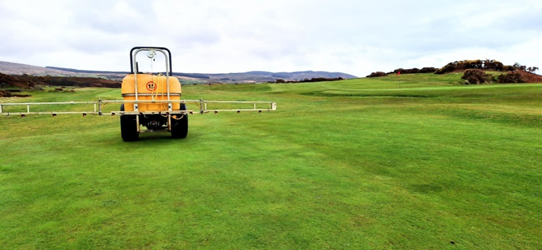
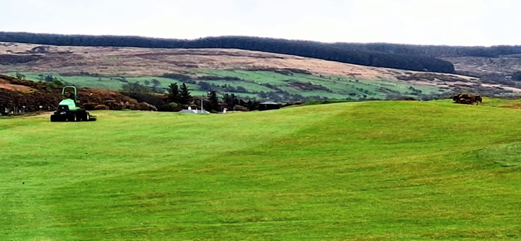
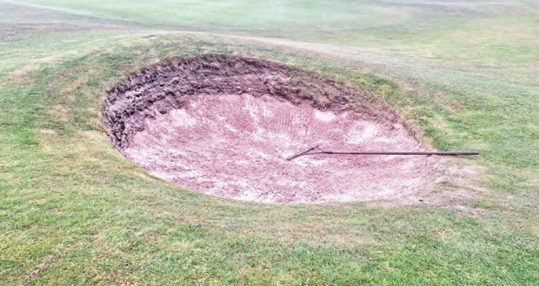
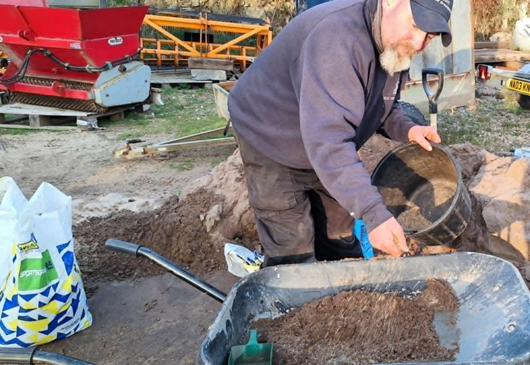
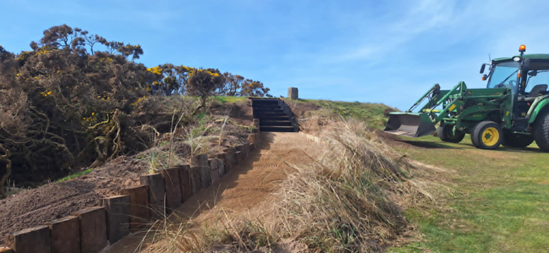
Course Update – 4th April 2025
The course is drying out this week with the full sun shining all day. Unfortunately, the east wind is making it tough to water the greens and keep the new seedlings that are now coming through hydrated.
This week we have top dressed the greens again to help with surface levels and dilute organic matter.
We’ve also been busy topping up the disease scars. We’ve been down on our knees, rubbing in the top dressing by hand, and for larger areas, we’ve been using drag matting. I find drag matting better than brushing because it deposits more top dressing into the scars instead of the brush taking it back out.
Additionally, we’ve been working on a new path and steps to the 8th medal tee.
Course Update – 26th March 2025
The favourable weather conditions earlier this week allowed us to conduct a hand cut on the greens. The warmer and drier weather over the past two weeks, though welcomed, necessitated watering the greens to keep the new seedlings from the recent overseeding properly hydrated.
We kindly remind golfers to adhere to course etiquette by repairing pitch marks on the greens, replacing divots on the fairways, lifting broken tees, and raking bunkers after use.
On Thursday, we were pleased to welcome some of our members who contributed their time and effort to repair divots on the fairways. Their invaluable assistance was greatly appreciated, and we plan to continue this practice regularly throughout the season. This initiative not only ensures that the fairways remain in pristine condition but also allows our greenkeeping team to concentrate on other essential areas of the course. Members interested in volunteering are encouraged to notify the Head Greenkeeper.
Today, Friday, provided an opportunity to catch up on painting tee markers. March has been notably dry, but today we experienced sleet and hail showers accompanied by a cold northerly wind.
Additionally, our new practice net has been installed this week. So dust off those clubs from the back of the shed and come down for a hit!
All the greens will require light top dressing through April and May.
The Road to Recovery – 19th March 2025
Overseeding
Last week we continued with our over seeding programme, using the finer fescues native to our links environment.
Thirty years ago the greens were predominately Poa Annua (annual meadow grass). Poa is a prolific self-seeder through the summer months, resulting in very slow greens – something that we have been actively eradicating through years of overseeding, in favour of the finer fescues.
The composition of the sward is now far more of this natural links grass that we want to see on our greens. These deep rooted perennials are also more disease and drought resistant.
The purchase of the Vredo Disc Seeder has allowed us to overseed the greens all summer with no surface disruption, and also allows for a very good germination rate.
Top Dressing
We have been lightly top dressing the greens over the winter when weather conditions allow. Further top dressing was applied last week after the over seeding. The top dressing then has to dry out sufficiently to allow brushing in to the canopy (we do not brush the top dressing off).
Further overseeding and top dressing will be carried out in the coming weeks. We hope for favourable weather conditions to get quick germination, but this relies on a helping hand from mother nature.
Germination sheet
A germination sheet has been placed on the 3rd green. We hope this will hasten the germination of the new seed, allowing quicker recovery and for the green to be back in play at the earliest opportunity.




Greens Recovery – 7th March 2025
Tackling Disease and Focusing on Recovery
We’ve had a tough time with our greens recently due to an autumn disease outbreak. The damp, dull, and mild conditions of October and early November created the perfect environment for Microdochium pathogens to thrive.
We have taken proactive steps to address this issue and sought advice from the R&A agronomists. They have supported our efforts so far and provided additional suggestions to both promote recovery and the increase resilience of our turf against future disease outbreaks. Here’s a detailed outline of the recovery plan we have implemented over the past few months and our strategy moving forward:
Micro Tining using 8mm tine. This is a vital process that helps improve the greens’ health by allowing better air and water movement through the soil and relieving compaction. The holes created also provide a good environment for young seedlings to establish. (see next point)
Over seeding using pot seeding and dimple seeding methods for separate applications of bent and fescue seeds to promote robust growth, and supplementing the above.
Cane switching. After seeding, we are switch caning extremely thoroughly to help the seeds settle into the newly created pots. This meticulous process ensures optimal seed-to-soil contact.
Top Dressing. In addition to the other recovery measures, we incorporate top dressing with sand. This process involves applying a thin layer of sand over the greens. The sand fills in any minor imperfections, helps to firm the surface, and improves soil aeration. This practice is essential for maintaining smooth and even greens, which are vital for optimal play conditions. We discussed the sand source, and whilst the R&A have not physically viewed our own sand they concur that this is highly likely to be the best material to use. This will be discussed during the visit.
Brushing the greens. Regularly brushing the greens is crucial to maintaining their health. This practice helps remove dew and other moisture from the leaves, reducing the likelihood of disease and promoting better air circulation. This will be of particular importance in the autumn.
Germination sheet. To further support germination, (with the better, less windy, weather) we will be using a germination sheet. The sheet will create a microclimate that fosters seedling growth. A contact and systemic fungicide will be applied prior to the renovation – the active ingredient, Difenoconazole and Fludioxonil, will help protect against further fungal issues which could happen if the turf is sweating under the germination sheet. Stewart and the team have been briefed and understand that the sheet should be removed at the earliest opportunity and immediately if any mycelium is observed. 4 days would hopefully suffice.
Nitrogen support. Once germination occurs, the young plants will be supported using limited amounts of nitrogen to encourage healthy development.
Aquaduct Flex. The application of surfactants, such as Aquaduct Flex, is prudent to enhance water distribution and uptake in the soil. Stewart is looking to source some of this specialist material.
The greens are starting to show signs of recovery, and some more good weather will aid this process. You may have noticed the over the last week that the course has greened up – this is not purely down to nature, the greens, tees and fairways have been sprayed with a mix of seaweed and iron.
Whilst we are in a difficult situation we are not alone. The R&A were able to share photos of other golf clubs that have had a difficult autumn. This is not an excuse, but it is correct that the membership have a full understanding of the biotic and abiotic stresses that fine turf endured across the UK in October/November.
Looking ahead, a preventative fungicide application will be applied in autumn 2025. Whilst not an absolute guarantee that disease can be avoided the likelihood and severity will be significantly reduced.
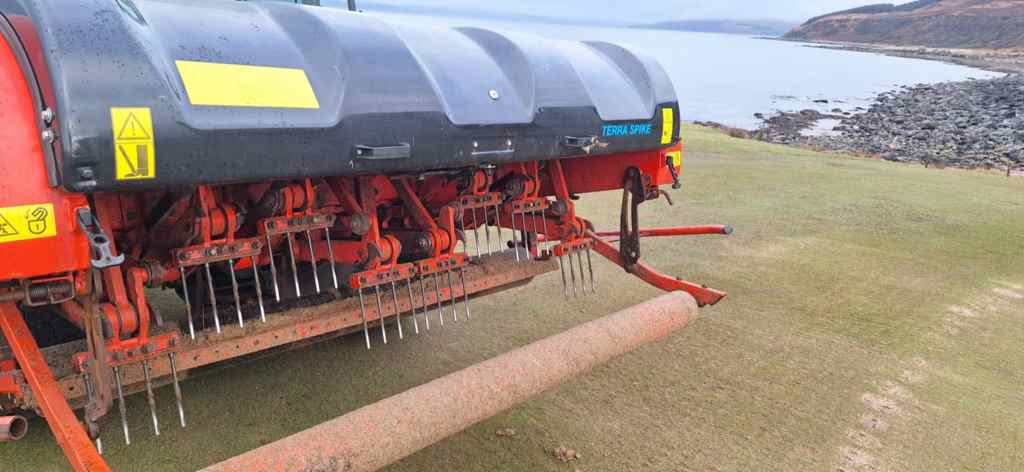
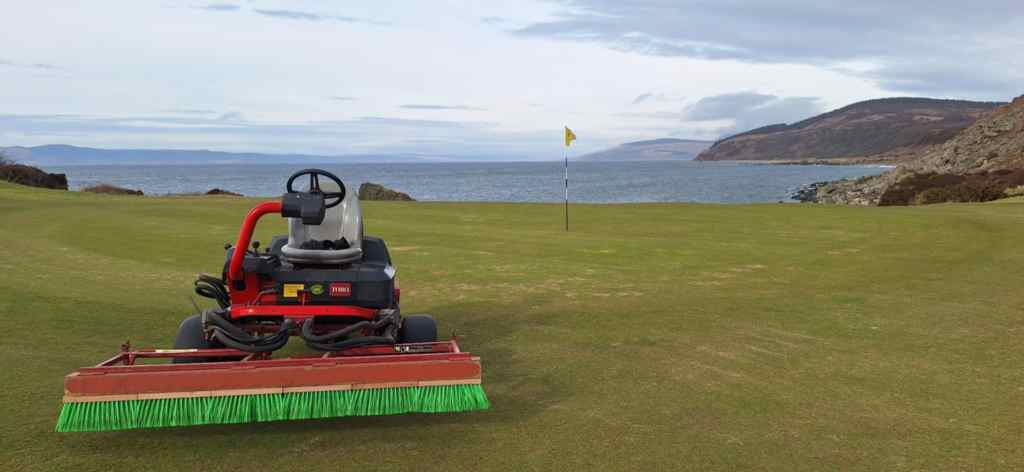
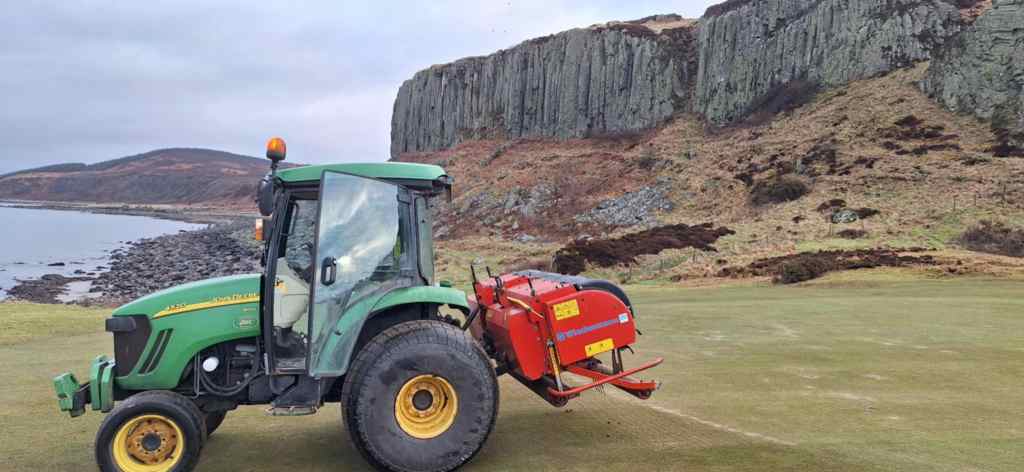
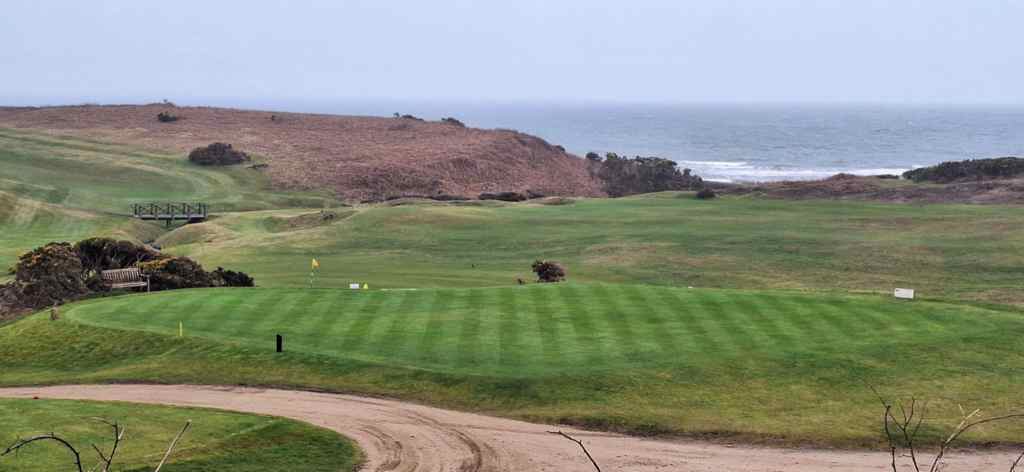
Whin (Gorse) Management – 4th March 2025
Whin (Gorse) management continues over the Winter. In the olden days the animals grazing the course kept the growth down.
The whins have become too leggy and woody and will eventually get blown over. The management plan involves cutting them down low to allow regrowth. The plan is to keep the gorse more bush like with the last photo showing how the whins will look in 2 years.
